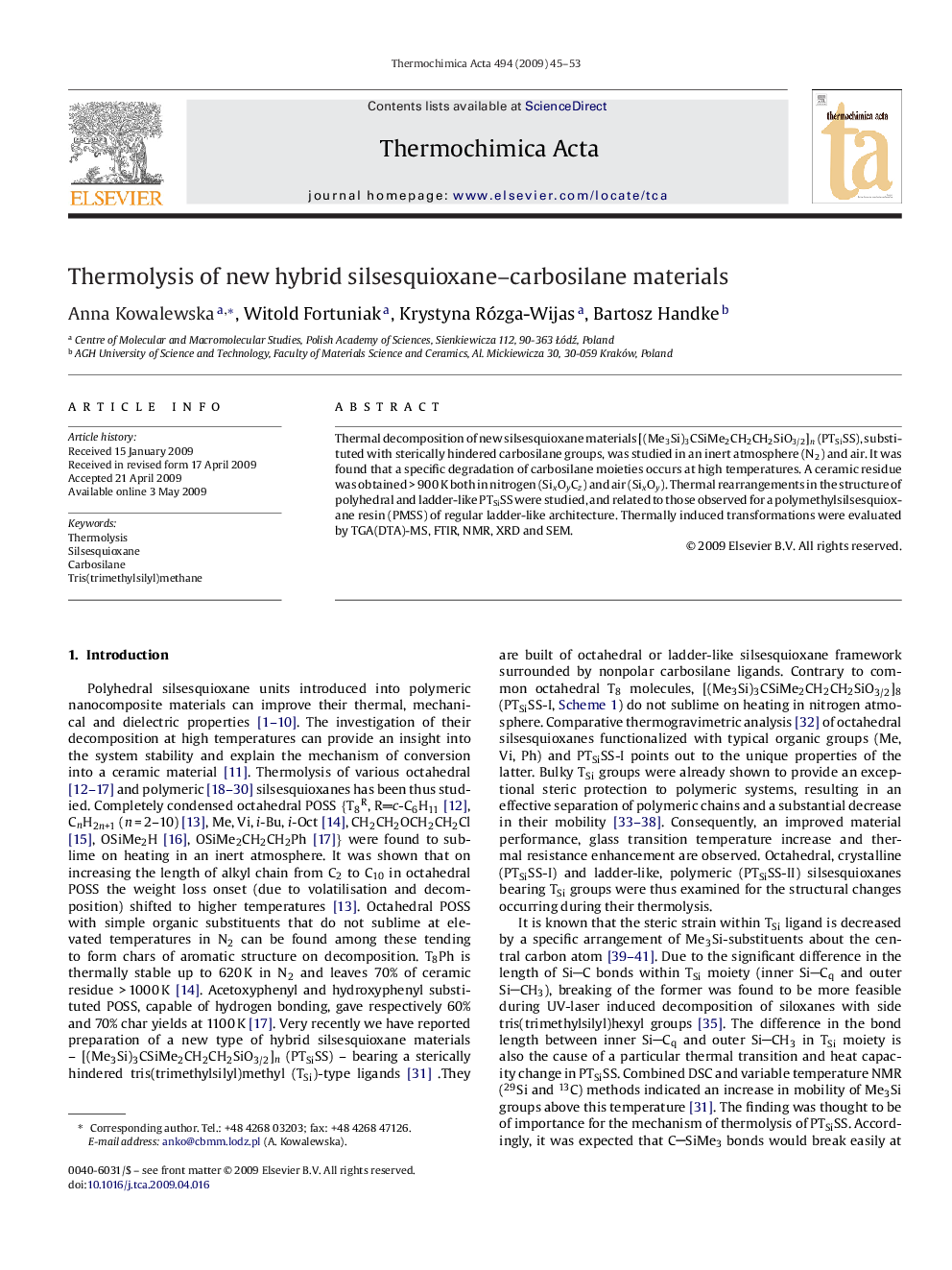| Article ID | Journal | Published Year | Pages | File Type |
|---|---|---|---|---|
| 675052 | Thermochimica Acta | 2009 | 9 Pages |
Abstract
Thermal decomposition of new silsesquioxane materials [(Me3Si)3CSiMe2CH2CH2SiO3/2]n (PTSiSS), substituted with sterically hindered carbosilane groups, was studied in an inert atmosphere (N2) and air. It was found that a specific degradation of carbosilane moieties occurs at high temperatures. A ceramic residue was obtained > 900 K both in nitrogen (SixOyCz) and air (SixOy). Thermal rearrangements in the structure of polyhedral and ladder-like PTSiSS were studied, and related to those observed for a polymethylsilsesquioxane resin (PMSS) of regular ladder-like architecture. Thermally induced transformations were evaluated by TGA(DTA)-MS, FTIR, NMR, XRD and SEM.
Related Topics
Physical Sciences and Engineering
Chemical Engineering
Fluid Flow and Transfer Processes
Authors
Anna Kowalewska, Witold Fortuniak, Krystyna Rózga-Wijas, Bartosz Handke,
